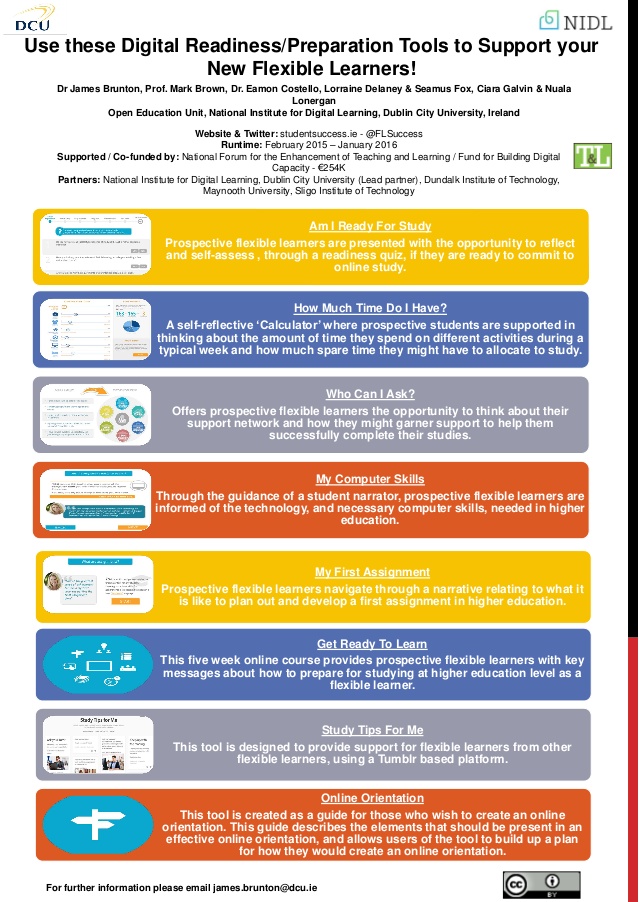Student success: Difference between revisions
m (→Bibliography) |
|||
| Line 27: | Line 27: | ||
In addition to that there exist tools that students can adopt individually, in particular "getting things done" tools, e.g. | In addition to that there exist tools that students can adopt individually, in particular "getting things done" tools, e.g. | ||
* [[Bullet journal]]s | * [[Bullet journal]]s | ||
* Any note taking tool that allows easy organisation and updating of contents, e.g. Evernote or even a [[wiki]]. | * Any note taking tool that allows easy organisation and updating of contents, e.g. Evernote or even a [[wiki]]. | ||
* simple planning tools, e.g. "todo lists" or agendas/calendars | * simple planning tools, e.g. "todo lists" or agendas/calendars | ||
Latest revision as of 15:23, 16 January 2019
Introduction
Student success refers to a student's ability to complete an educational module or program.
Student success can be defined very tightly as in Brown et al. (2016). [1]: “[..] being: where a student moves beyond the early stages of the study life cycle, i.e. beyond the first few weeks of study, without exiting their programme of study/the institution; or, makes an informed decision not to study having reflected on their readiness for study at higher education level”.
These authors [1] conclude a section on "what do we know about student success" (p. 22) “In summary, it is challenging to define the core concerns that impact success in a flexible learning setting, but there are a number of useful elements and aspects that surface from the literature on retention and progression. These include concerns for the deeply social and personal nature of the learner experience, including the need to address difficulties around personal circumstances, institutional and course matching practices, the affective dimension of the academic experience, readiness for higher education, and the social dimensions of transition. Learners impacted by multiple difficulties are particularly at-risk.”
Improving student success
A first strategy is to help transition, e.g. make sure that a learner will be able to cope with a new type of environment (e.g. moving from high school to university).
The team from the Student success project created a poster with the following objective:
(Use these Digital Readiness/Preparation Tools to Support your New Flexible Learners!, retrieved March 1, 2017)
Software and environments
"Student success" often refers to a service or policy of an educational institution and as such is implemented at the institutional level by student affairs, student support, or student services. Student success also should be a concern of program managers and individual teachers.
- Some universities offer online information that may help student's organize their studies and coping with diverse situations
- Tracking tools allow tutors and advisors to identify students that may need help
In addition to that there exist tools that students can adopt individually, in particular "getting things done" tools, e.g.
- Bullet journals
- Any note taking tool that allows easy organisation and updating of contents, e.g. Evernote or even a wiki.
- simple planning tools, e.g. "todo lists" or agendas/calendars
- collective forum/messaging/document tools like BaseCamp, Asana
The idea here is to adopt some kind of method, the precise tool used may be of secondary importance. Some tools exist as web service, other as apps that can be installed on a variety of platforms (PCs, mobile phones, browser extensions).
Finally, student success also can be improved through external motivation, e.g. gamification environments that also can be added to environments mentioned above, i.e. the kind of environments that are popular in health/fitness applications for smart phones.
Bibliography
(to do)
- See: http://studentsuccess.ie/publications/ (e.g. look at the bibliography in the 2016 report )
Citations
Links
- http://studentsuccess.ie/
- Transfer Student Success Publications (Association of American Colleges & Universities)
